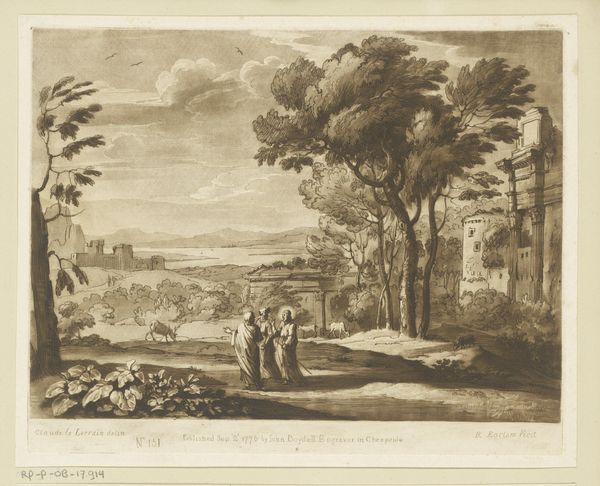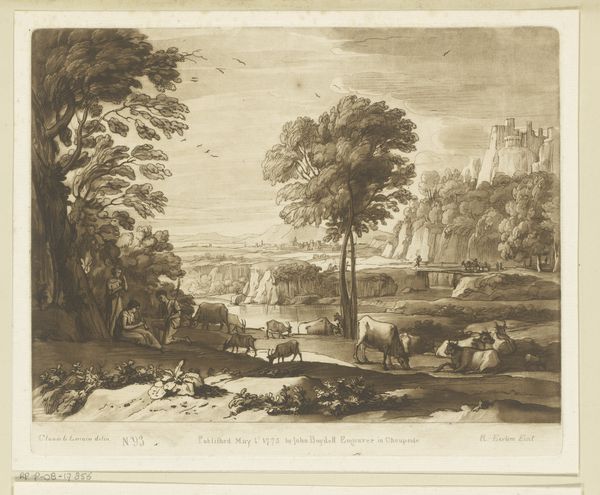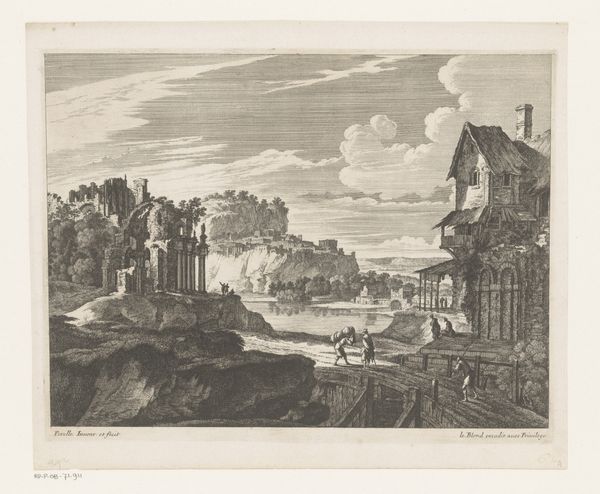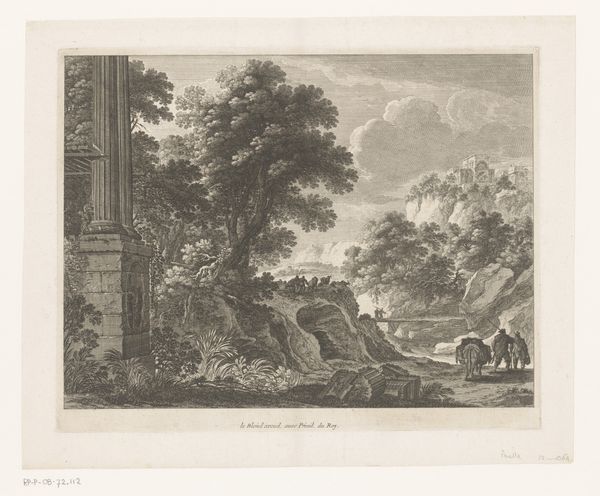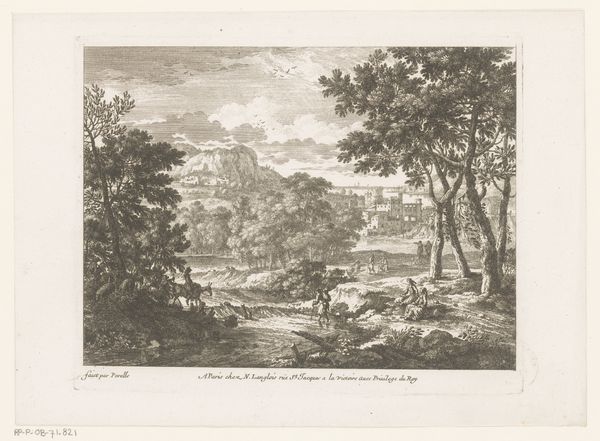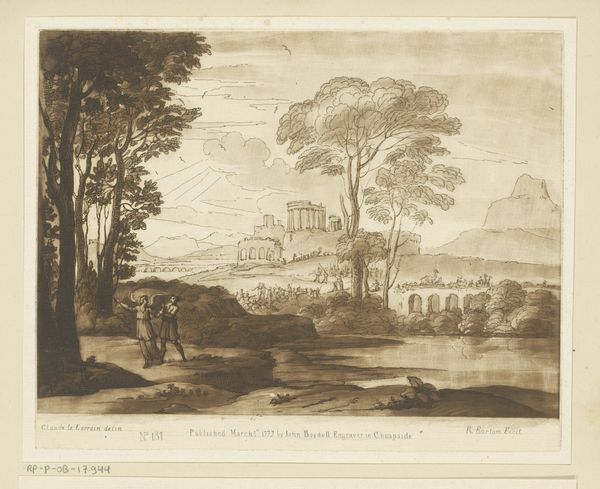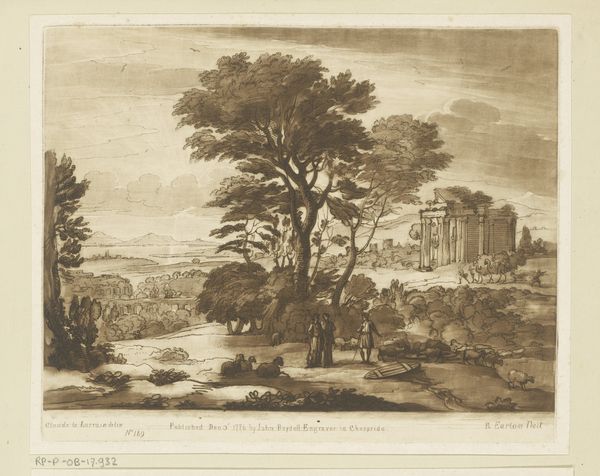
Dimensions: height 208 mm, width 259 mm
Copyright: Rijks Museum: Open Domain
Curator: Looking at "Landscape with the Nymph Egeria Mourning over Numa," potentially created in 1776 by Richard Earlom, I’m struck by how skillfully Earlom translated landscape and history into a print. Editor: My immediate response is the overwhelming melancholy. The sepia tones amplify the sense of loss, and the architectural ruins contrast sharply with the vibrant natural landscape, hinting at the impermanence of even the grandest human endeavors. Curator: Yes, the choice of engraving as a medium here is vital. Earlom's process mimics the detailed layering and tonal variation typical of landscape paintings, thus offering prints to a broader consumer base and democratizing fine art. We see how reproductive prints blurred the line between original work and craft. Editor: I’m interested in the image itself. This scene represents a potent socio-political statement: the grief of a nymph, tied to nature, mourning the death of a king known for his wisdom and law. The landscape is as much a character as Egeria herself, reflecting her internal state, something Romanticism latched onto with zeal. Curator: Precisely! The nymph, representing a return to a pastoral ideal, stands apart from those classical ruins which were then very fashionable in interior design. So these engravings found their place in upper-class domestic spheres, almost functioning as commodities representing culture and taste. Editor: Consider where something like this would have been displayed, probably to showcase the owner's deep understanding of both the classical world and their sensitive appreciation for sublime, untamed nature. It’s less about faith, or history, and more about displaying good taste through visual tropes. Curator: Ultimately, viewing this landscape, framed in grief, allows us a fascinating peek at artistic production and societal value placed upon sentimental history during the late 18th century. Editor: An intricate balance, Earlom has woven threads of personal loss and architectural grandstanding in the theatre of a single copper plate.
Comments
No comments
Be the first to comment and join the conversation on the ultimate creative platform.
